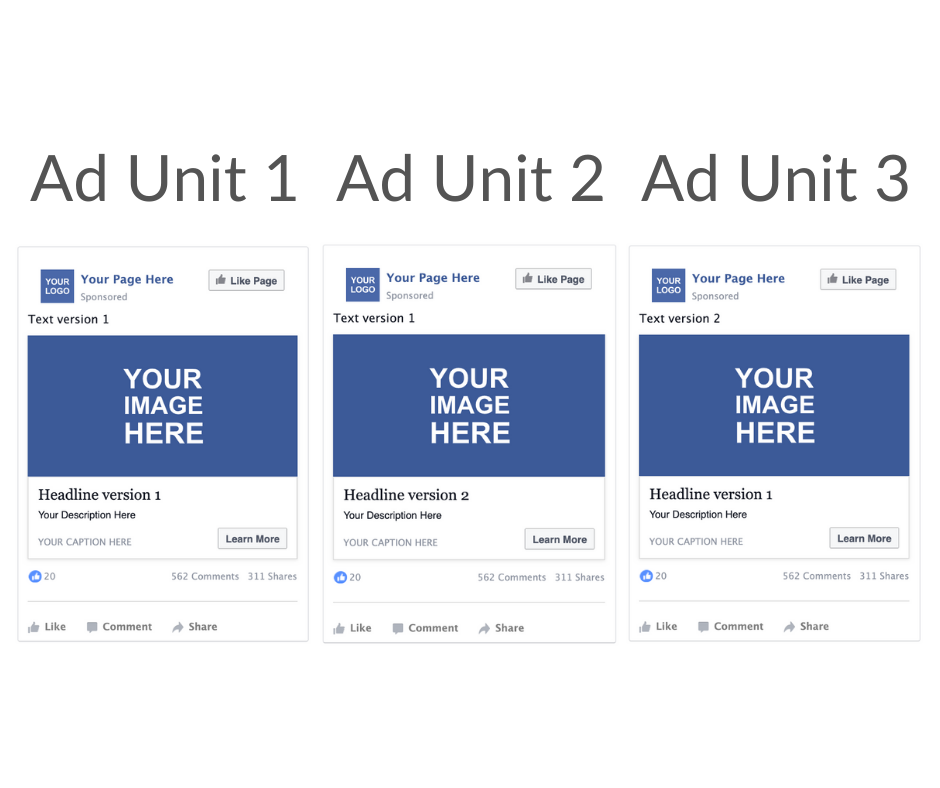Nature doesn’t A/B test. When we look at how nature evolves it tries tons of combinations of things at once and evolution happens based on the last organism standing. It’s a process of elimination, rather than a search for the right answer.
Digital advertising should use the same process of elimination — search for what doesn’t work rather than what does.
This can be counterintuitive, especially when every digital ad blog, agency and guru says that ads should be A/B tested methodically. But I believe that is utterly archaic — nature doesn’t function this way so why are we advertising like that?
I challenge you to take your A/B testing a step further — I called it A-through-Z testing.
Hire me with the form below.
Big Number Theory and Advertising
Big number theory is the idea that with enough data, trends start to emerge. These trends allow us to identify independent and dependent variables, see trends and more importantly — find outliers. Outliers exist in the tales, and these tales are typically where the most interesting things happen.
When we employ big number theory in digital advertising we can identify the ads that are the best use of our advertising resources. No longer are we constrained by physical ad slots that magazines, newspapers, and other print media confine us to. Instead, we have access to a relatively infinite inventory of ad slots, and this access to ad placement inventory allows us the opportunity to make tens, hundreds or even thousands of ads.
No longer do we have to run a single ad to an audience, but rather every ad creative idea we can think of. Read more about this idea here.
And the most exciting part is that by trusting big number theory, we’re going to be able to find the average ads, the ads that are on the tales and allocate our time, money and mental energy to the ads that create the most organizational impact.
What is A-through-Z Testing
When I was working at my previous agency, I would regularly have conversations with clients at big, public, corporate companies. These executives would regularly try to ask about how we’re testing and would try to dissect ad components. They’d look at the photos in ads, the copy, the call to action, and then they would try to find trends within those.
This is wrong. It is wrong because when you combine the different aspects of creative it creates a whole new piece of media. Hydrogen and oxygen apart are naturally combustible, together they’re naturally cool.
A-through-Z testing combines this idea of ad units being their own entity, large number theory,, and the idea algorithm will decide the winner for us. When I say decide the winner, the algorithm will show us in the CPC and conversation data which ad units are the most effective.
From an application standpoint, imagine you combine ten different photos, ten different headlines and ten different body texts for Facebook ads. This would create 1K combinations. Then we run these ads and we let the platform (or the people on the platform) decide which one is the greatest return on ad spend.
In this way we’re not forcing a message on the audience, but rather teasing a message out of the audience with the message they want to engage with most. Read more on my beliefs of arrogance and advertising here.
Based on these ad units that are successful, when we refresh the ad units we can incorporate that new knowledge into our decision making — think what media and copy go well together. This influences the components we use but it doesn’t separate the ad units.
A-through-Z Testing is the Bridge to the Future of AI-Based Advertising
I would like to note that making 1K different ad units isn’t probably a good time investment for organizations, but what if a human wasn’t making the ads?
In the near future companies will have media libraries that AI-based software will create ad units from. Firms will be able to test thousands of ad units and advise creative teams on what media they should make next for the media library. This is the future of digital advertising and at my company Audience Eye this is what we’re pursuing.

